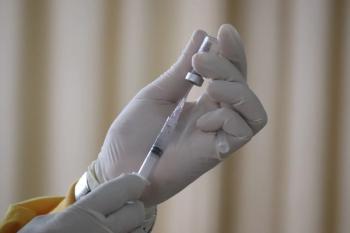
BA.2 Variant: What We Are Learning
A preprint study shows the variant is resistant to some monoclonal antibodies and vaccines.
The BA.2 COVID-19 variant, otherwise known as the “stealth” version of Omicron (BA.1), is now reported to be 30% to 50% more contagious than its cousin.
Just a few weeks ago,
The World Health Organization (WHO) believes this variant will continue to increase internationally. "BA.2 is more transmissible than BA.1 so we expect to see BA.2 increasing in detection around the world,” Maria Van Kerkhove, PhD, COVID-19 technical and health operations lead, said last week at a
During the same session, Dr. Abdi Mahamud, incident manager, COVID-19 Incident Management Support Team, WHO, said it remained unclear whether BA.2 can reinfect people who previously had Omicron.
"So BA.2 is certainly on the rise, but this is also Omicron,” Van Kerkove said. “We don’t see any difference in terms of severity between BA.2 compared to BA.1…[however] it is not the common cold; it is not influenza; we just have to be really careful right now.”
Resistance to Vaccines, Monoclonal Antibodies
A
“Consistent with recent studies, BA.1 is highly resistant to the antisera elicited by mRNA-1273 and ChAdOx1 vaccines,” the authors of the prerint wrote. “Similar to BA.1, BA.2 was also highly resistant to the vaccine-induced antisera.”
Resistance was also demonstrated with monoclonal antibodies. “BA.2 was almost completely resistant to two therapeutic monoclonal antibodies, Casirivimab and Imdevimab, and was 35-fold more resistant to another therapeutic antibody, Sotrovimab,” the authors wrote. “When compared to the ancestral D614G-bearing B.1.1 virus. Moreover, both BA.1 and BA.2 were highly resistant to the convalescent sera who had infected with early pandemic virus (before May 2020), Alpha, and Delta. These data suggest that, similar to BA.1, BA.2 is highly resistant to the antisera induced by vaccination and infection with other SARS-CoV-2 variants as well as three antiviral therapeutic antibodies."
Is BA.2 the Next Omicron?
COVID-19 infection rates are decreasing and have been trending that way for a couple of weeks now. When Omicron was first discovered in November in South Africa,
Shortly thereafter, it had its
It remains to be seen if BA.2 will become the next predominant strain, or if it is more virulent. Unfortunately, the world remains in a holding pattern until the answers can be uncovered.
“We’re looking at not only how quickly those peaks go up but how they come down,” Van Kerkhove said of the virus transmission rates. “And as the decline in cases occur, we also need to look at is there a slowing of that decline or we will see an increase again? If we start to see an increase, we could see some further infections of BA.2 after this big wave of BA.1.”
Newsletter
Stay ahead of emerging infectious disease threats with expert insights and breaking research. Subscribe now to get updates delivered straight to your inbox.











































































































































































































































































